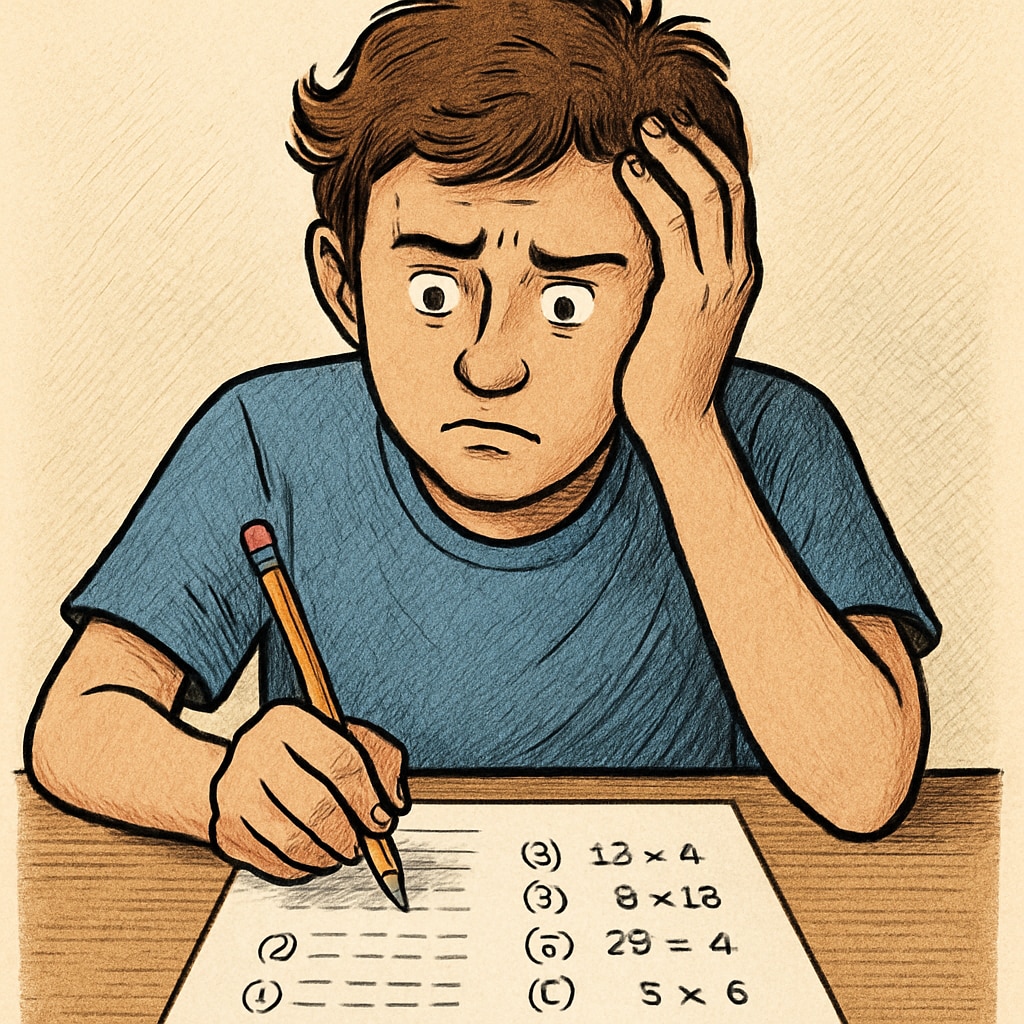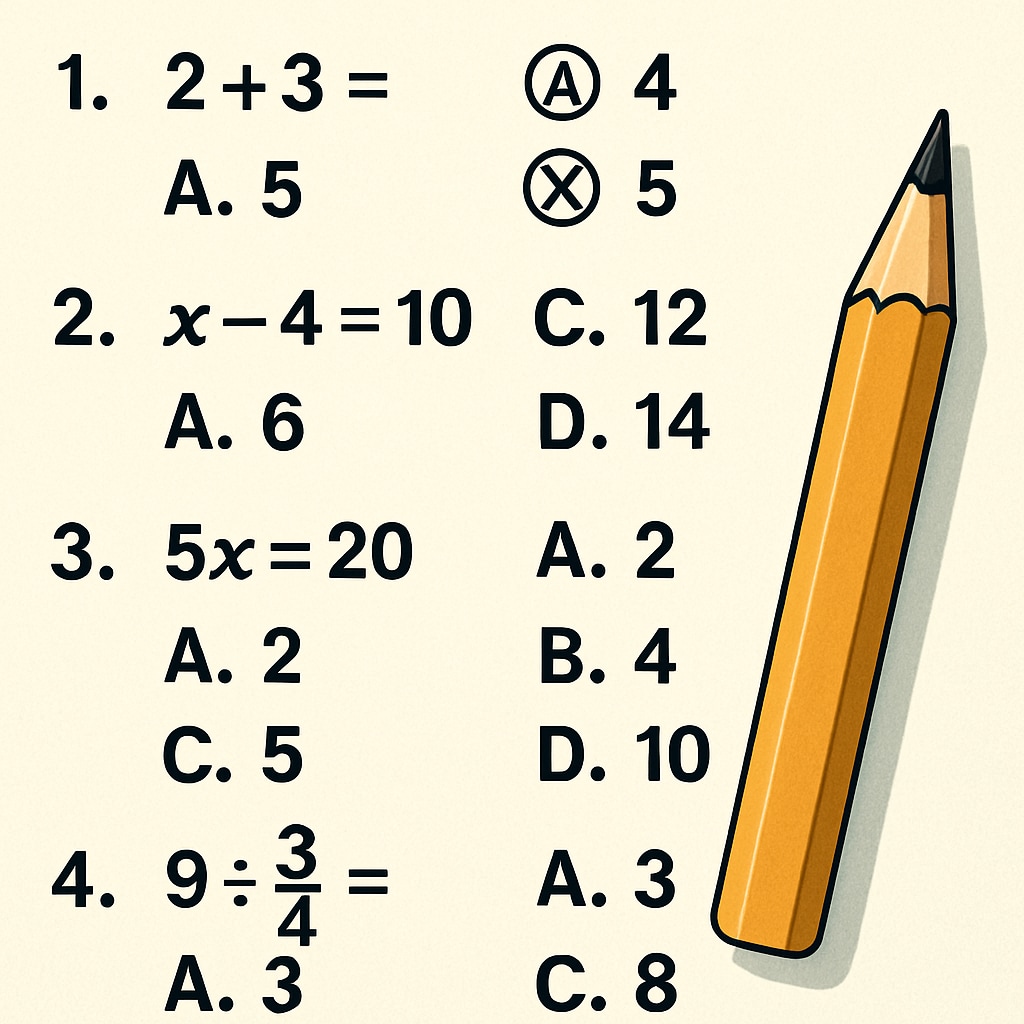Math anxiety, exam pressure, and the difficulties posed by multiple-choice questions are frequent obstacles for students, particularly during high-stakes tests. These challenges often undermine confidence and academic performance, leaving students feeling overwhelmed. However, understanding the psychological mechanisms behind these issues and implementing targeted solutions can make a significant difference in achieving success in mathematics.

Understanding Math Anxiety: Causes and Effects
Math anxiety is a psychological phenomenon characterized by feelings of tension, fear, and worry when engaging with mathematical tasks. According to research, this condition often stems from negative past experiences, societal stereotypes about math abilities, and high-pressure academic environments. For example, a student who struggled with complex problems in early education may carry this emotional baggage into higher-level exams.
Math anxiety not only affects emotional well-being but also impairs cognitive functioning. Students may experience difficulty concentrating, memory lapses, or even physical symptoms like sweating and rapid heartbeat during exams. As a result, their ability to perform accurately on multiple-choice questions—where precision and quick decision-making are essential—can be severely hindered.
The Unique Challenge of Multiple-Choice Questions
Multiple-choice questions present a distinct set of difficulties for students struggling with math anxiety. Unlike open-ended problems, these questions often come with distractor options designed to test critical thinking and attention to detail. For anxious students, the presence of these deceptive alternatives can amplify feelings of self-doubt and second-guessing.
Furthermore, the rigid format of multiple-choice questions can exacerbate perfectionist tendencies. Students may feel compelled to overanalyze each option, fearing the consequences of selecting the incorrect answer. This mental overload not only wastes valuable time but also increases the likelihood of errors.

Practical Strategies to Overcome Math Anxiety and Exam Pressure
While math anxiety and the challenges of multiple-choice questions can feel daunting, there are effective strategies to alleviate these issues. Below are actionable techniques to help students regain control and confidence during math exams:
- Practice mindfulness: Relaxation techniques, such as deep breathing or meditation, can reduce anxiety levels and improve focus.
- Simulate exam conditions: Regularly practicing multiple-choice questions under timed conditions can help students familiarize themselves with the format and build confidence.
- Break down problems: Encourage students to dissect complex questions into smaller, manageable parts to reduce cognitive overload.
- Eliminate perfectionism: Remind students that making mistakes is part of the learning process and that aiming for progress, not perfection, is key.
- Use positive reinforcement: Celebrate small victories, such as solving one problem correctly, to cultivate a growth mindset.
Rebuilding Confidence in Math Exams
To rebuild confidence and overcome math anxiety, students must shift their perspective on mathematics and exams. They can start by focusing on their strengths rather than their weaknesses. For example, recognizing previous successes, no matter how small, can help counteract negative thought patterns.
Additionally, seeking external support—from teachers, peers, or even professional tutors—can provide valuable guidance and reassurance. Collaborative learning environments often offer fresh insights and make challenging concepts more approachable.
Finally, students should remember that overcoming math anxiety is a gradual process. With consistent effort and the right strategies, they can break free from the psychological barriers imposed by multiple-choice exams and achieve their academic goals.
Readability guidance: This article uses concise paragraphs, actionable lists, and transitions to ensure clarity. Strategies are presented in an easy-to-follow format, ideal for students seeking practical solutions.


